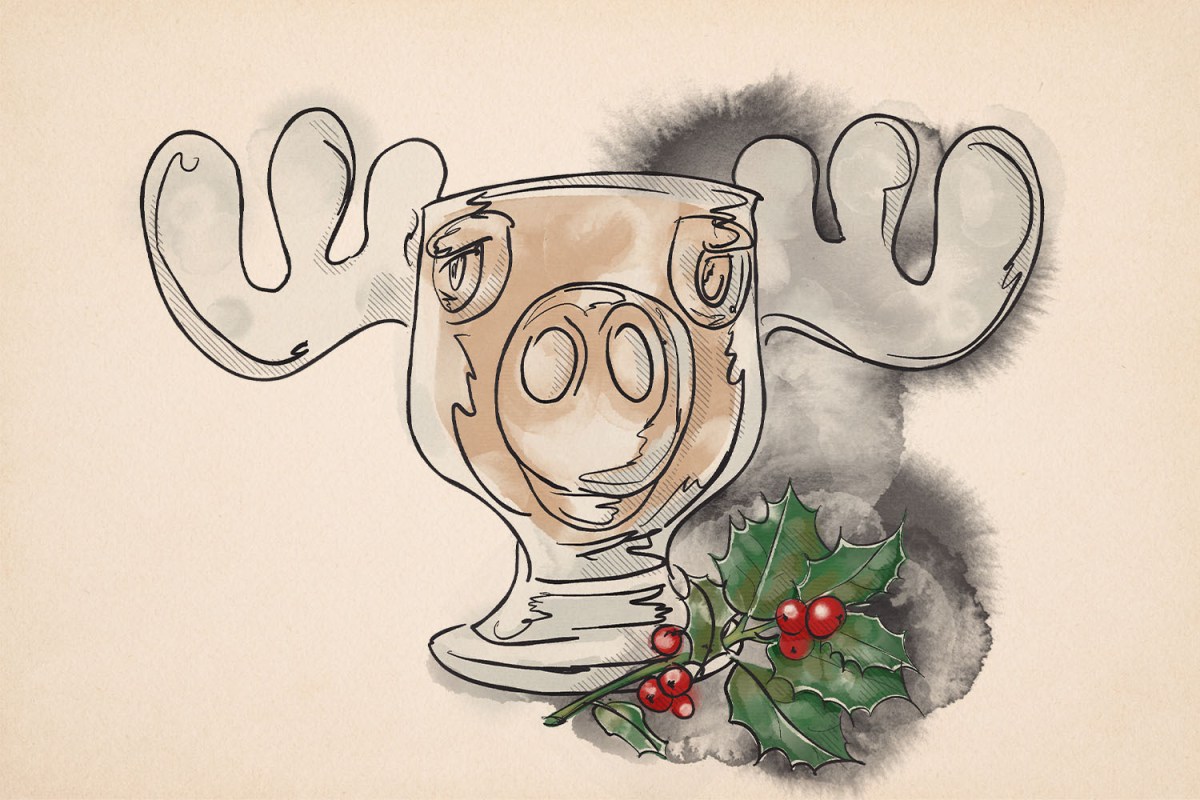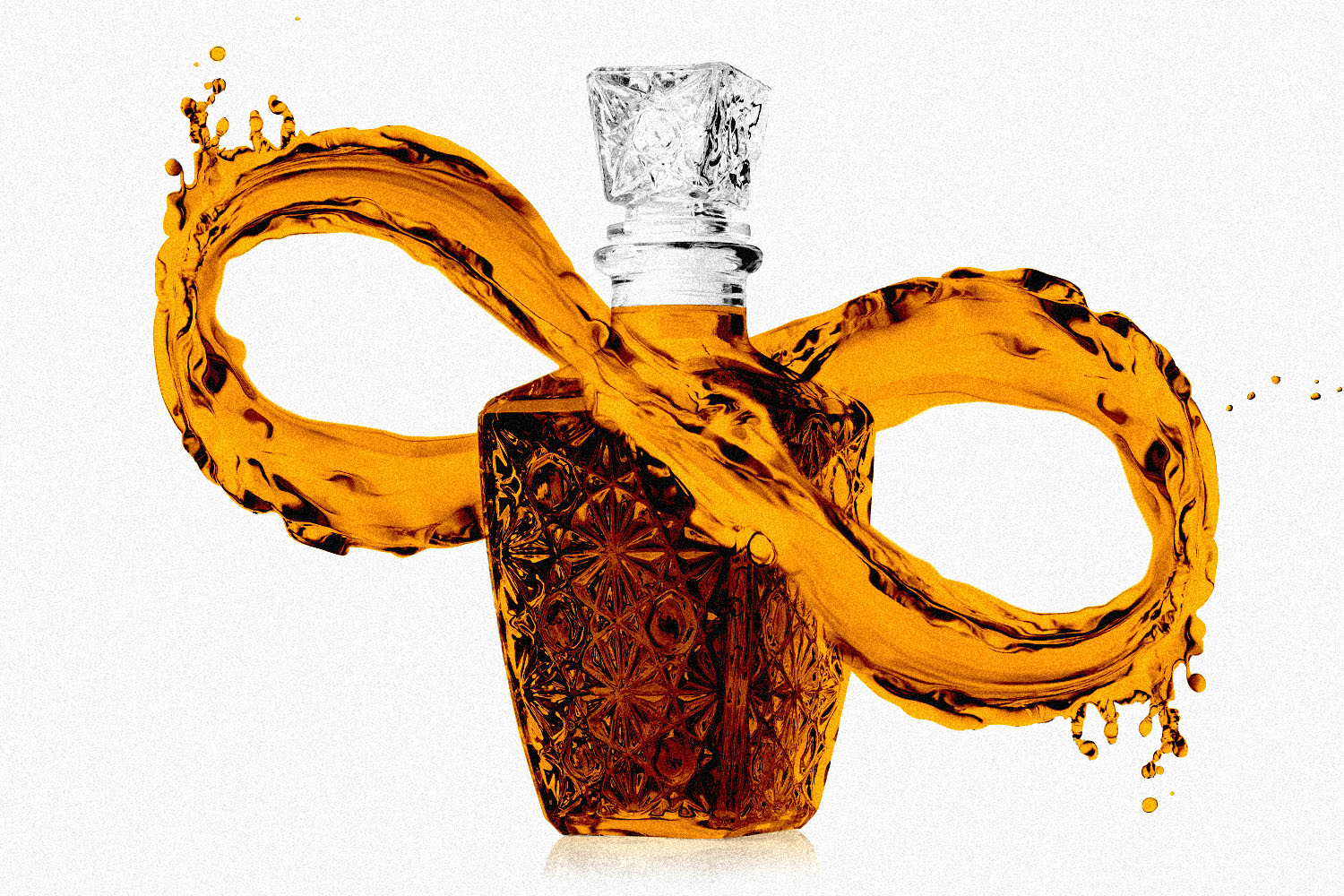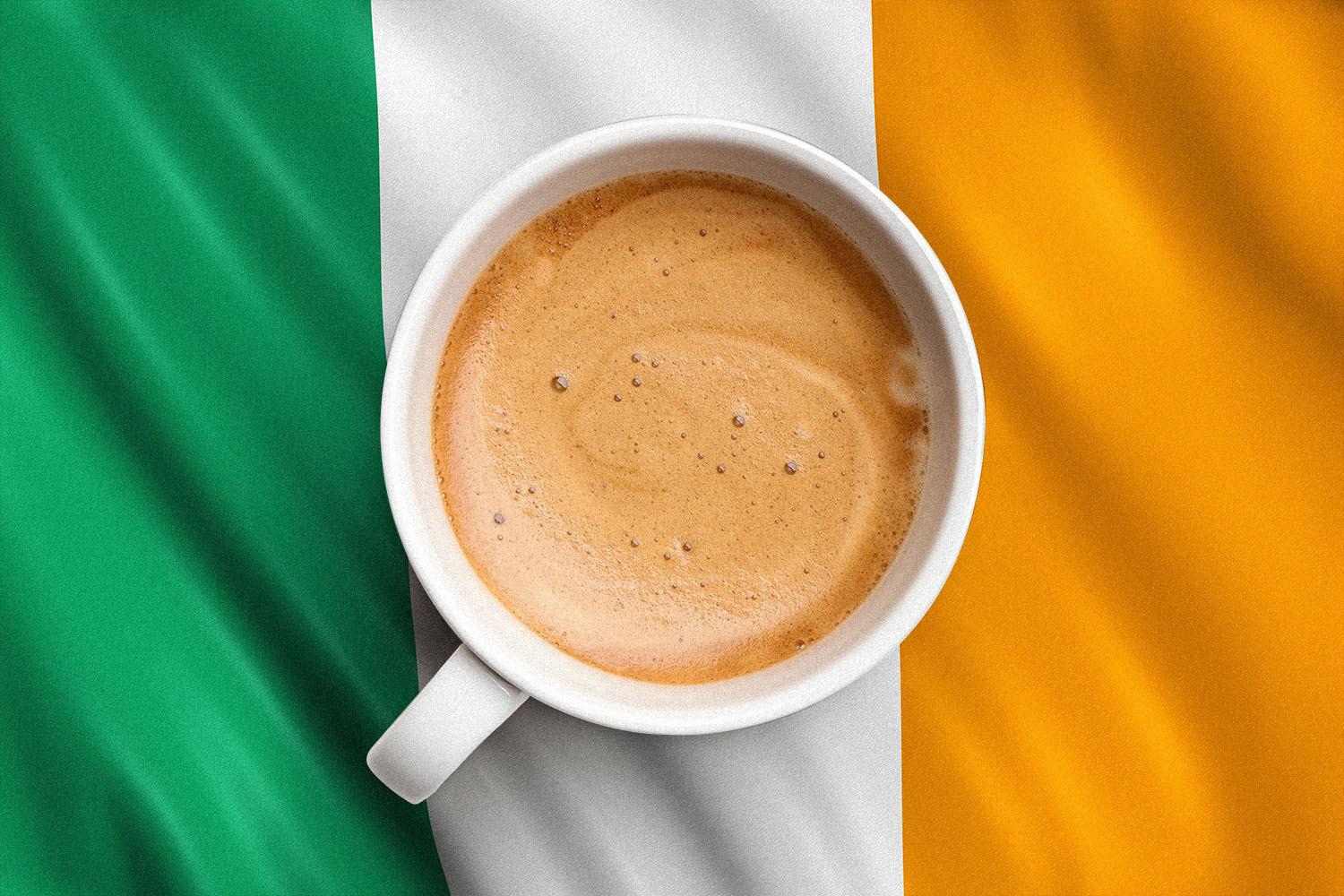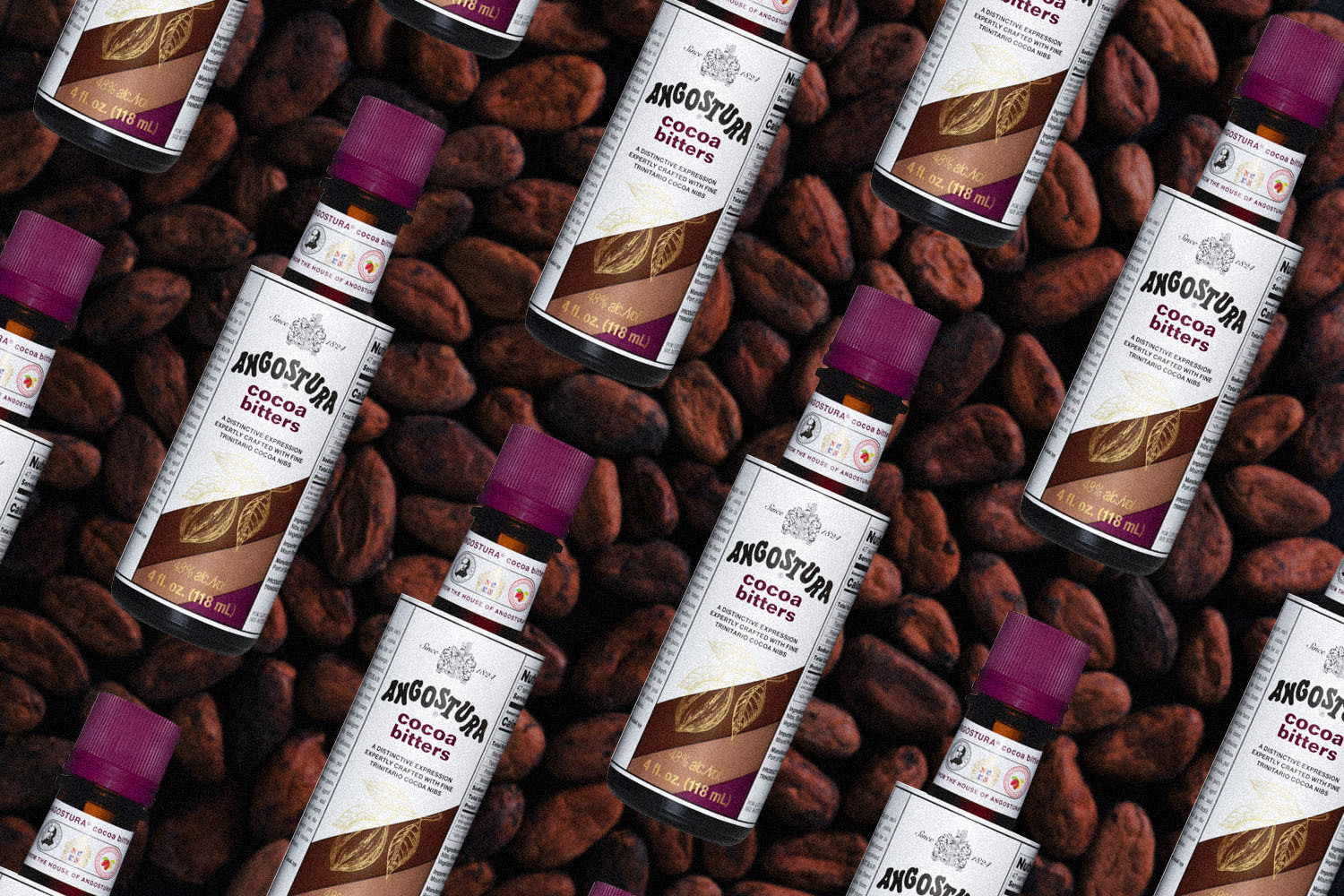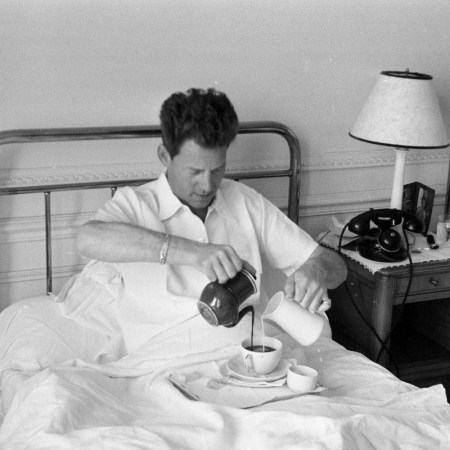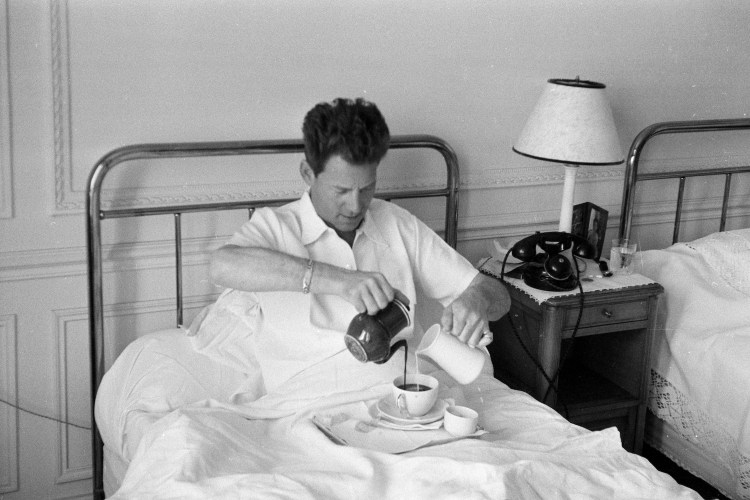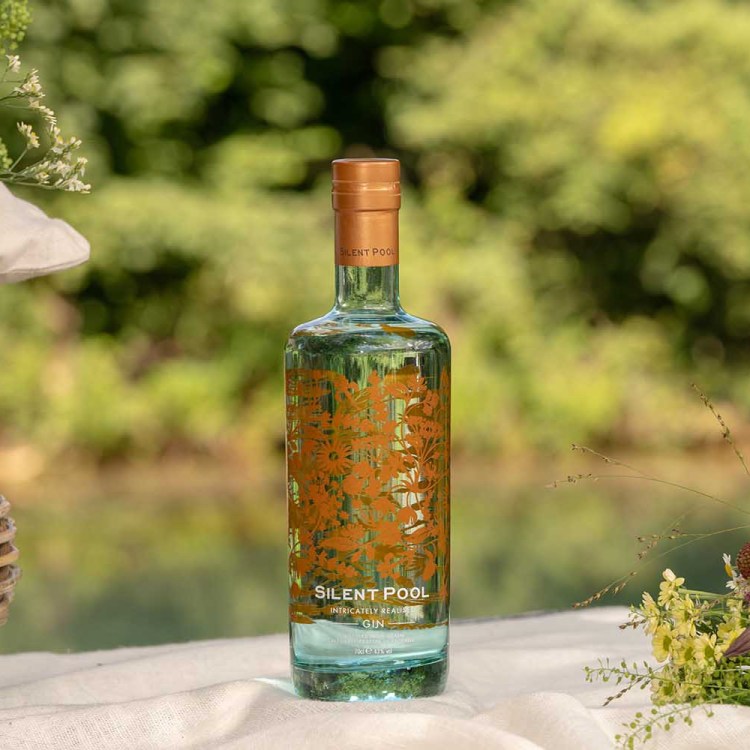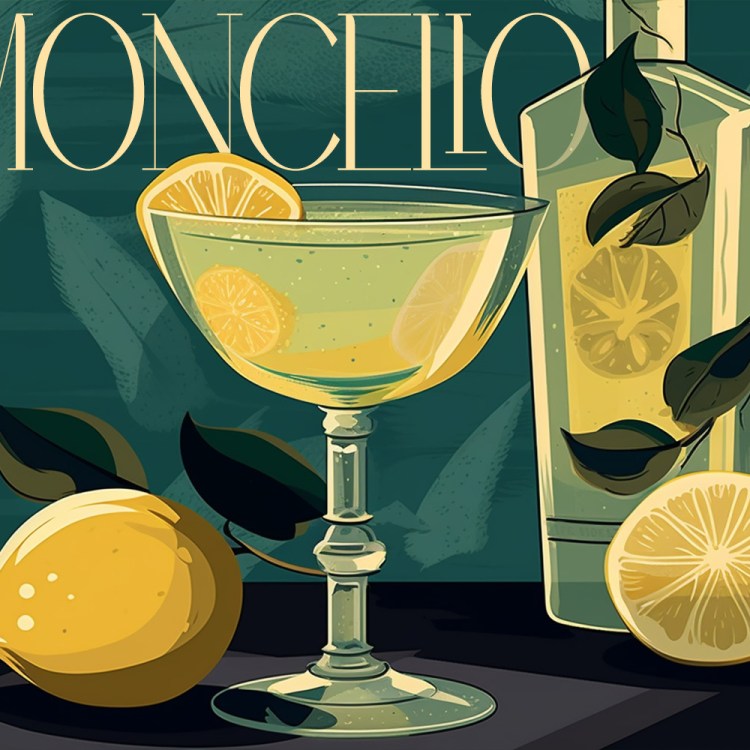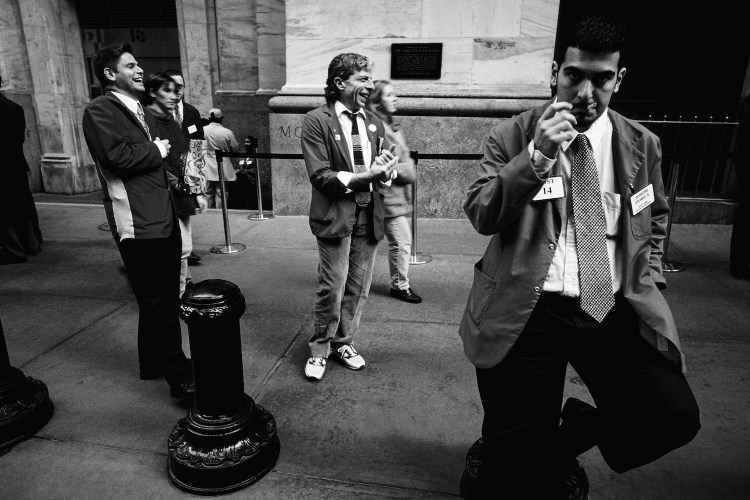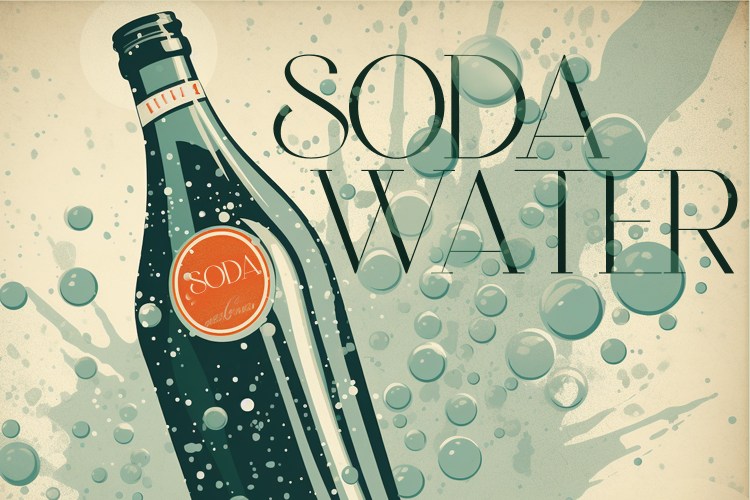“The best time to plant a tree is 20 years ago. The second-best time is now.”
So goes an old proverb that one could adapt for other things that take time to reach maturity. Eggnog, for example. The best time to make your Christmas eggnog is before Thanksgiving. The second-best time is now.
At first glance, eggnog doesn’t seem like the kind of thing you’d want to age. Whiskey? Yes. Eggs and cream? Um, maybe not. But combine whiskey, cream and eggs together (along with sugar and a few other ingredients), and you have a concoction that can certainly withstand some aging and potentially improve in the process.
The reason eggnog can age despite its dairy content is twofold. One half is that contamination of American dairy products is, thankfully, quite rare. The other is that alcohol inhibits bacterial growth. In pre-pandemic times, you may have joked that “alcohol kills everything” while sharing cocktails in a crowded bar. While that’s not exactly true — a normal cocktail isn’t going to have much disinfectant power in the short time it’s in your glass — it is true that if you start with clean dairy, spike it with enough alcohol and let the whole mixture chill in your refrigerator for a while, you can be reasonably assured of its safety.
To test this, microbiologists in 2009 went so far as to intentionally dose eggnog with salmonella to see what happened over time. Within a few weeks, the bacteria had died off. While we strongly advise against making salmonella an ingredient in your own eggnog, you can take some comfort from this strange experiment.
(To be fair, officials at the Food and Drug Administration warn against using unpasteurized eggs in eggnog and would likely disapprove of aging it, but the FDA is also notoriously risk-averse. Have you ever felt like you’re missing out on the FDA’s epic holiday parties? I didn’t think so. Still, if you’re immunocompromised or particularly cautious, do use your best judgment before proceeding, and discard any nog that looks or smells in any way off.)
Just because you can age eggnog, does that mean you should? This is a more divisive question. Culinary superstars Alton Brown and Michael Ruhlman are notable advocates of letting your nog rest. Kenji Lopez-Alt, on the other hand, concluded after a taste test of fresh and year-old eggnog that the fresh nog was superior. Scientifically speaking, we have to declare the question unsettled. Like so many things in the world of spirits and cocktails, this is a matter of personal taste.
“Aging smoooooooths out the blend between the spirits and the nog,” says Andrew Bohrer, an influential Seattle barman who now consults and works as a freelance illustrator. “I think you are choosing spirits to enhance favor, not hide them. But a spirit that has rested in nog for a month tastes integrated rather than just of liquor and dairy fat.”
For Andrew, batching up eggnog is an annual tradition, and he keeps it around in his refrigerator for up to a year. I’ve followed his lead on this, making up a new batch every winter and reserving a bottle to see how it evolves over time. I’ve gone as long as two years on mine and have tasted nogs as old as three. With proper care and storage, there’s no telling how long a batch might last and still taste wonderful.
“I love beverages and I tend to get obsessed with the ones that have a big delta between low and high quality,” says Bohrer of what inspired him to perfect his eggnog recipe. As with any mixed drink, there’s room for improvisation with eggnog, but technique matters. “Eggnog is a baking recipe and the techniques are even more important than the ingredients,” Andrew says. In other words, feel free to use whichever spirits strike your fancy, but be sure to put your eggnog together in the right way.
This mostly comes down to handling the yolks and whites of the eggs separately. Whisking the whites aerates the nog, giving it a soft, fluffy head. This will gradually dissipate if you’re aging your nog for, say, a year, but it will hold up surprisingly well — long enough to get you through the holidays. Taking this step ensures that your nog will be rich but not too thick.
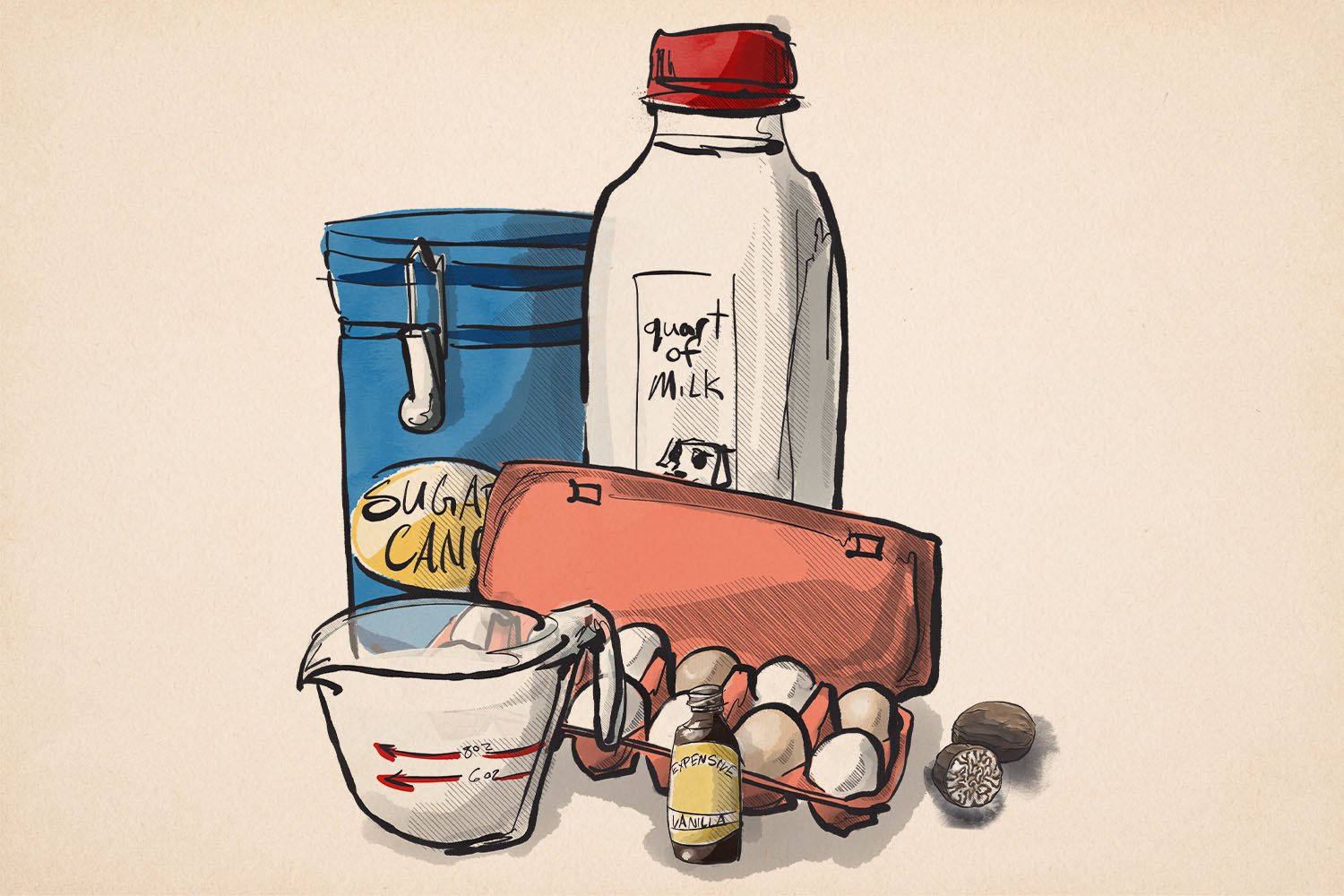
Then there are the spirituous additions. This is where things get exciting, with options ranging from the simple and traditional to contemporary and unorthodox. An acclaimed option in the latter category is Jeffrey Morgenthaler’s añejo tequila and amontillado sherry recipe created for Portland bar Clyde Common. I’m also a fan of Seattle bartender Anu Apte’s “beer nog,” an aged version she composed with cognac and porter for a holiday menu at her bar Rob Roy.
For a more traditional take, we can look to founding father George Washington, a man who could teach us important lessons in 2020 about how to leave the office of the presidency with dignity and also how to make a tasty nog. Recipes for George Washington’s eggnog abound on the internet. Alas, according to representatives of his estate at Mount Vernon, their authenticity is hardly definitive. Nonetheless, the common recipe is certainly in the spirit of what Washington may have imbibed, calling for ingredients that were in popular use at the time.
The recipe attributed to Washington calls for a potent mix of whiskey, brandy, Jamaican rum and sherry. This is a really fantastic combination and proves that blending spirits brings depth and complexity to a nog. “If I have to choose just one [bottle], it’s older, higher proof bourbon,” says Bohrer. “But I really think that the blend is the best way to go.” This is where your flexibility and creativity come into play. You might try rye and cognac, or bourbon and armagnac, and see how the different combinations work out from year to year.
The choice of rum, however, is key. There’s a reason that recipes often specify Jamaican rum. The island is famous for its funky, aromatic pot-still rums of unmistakable character. Look for bottles such as Smith and Cross or Doctor Bird. They’ll stand out against the sweet vanilla notes of whiskey and brandy and play wonderfully with the spices. You could also try something like cachaça or rhum agricole. Just try to avoid a relatively neutral, sweet rum, which wouldn’t add much to the barrel notes already present in the whiskey and brandy.
As for the sherry? Because its nutty flavor can be overpowering, Andrew suggests leaving it out of the batch and optionally adding it to the glass when serving, just a small splash (¼ oz. or less) per glass. The same with nutmeg: it works best as an aromatic garnish, grated on fresh when you serve the eggnog rather than resting in the bottle.
You could stop at the classic combination of whiskey, brandy and rum, but in recent years I’ve started making a couple other minor additions. Inspired by a recipe from Elizabeth on 37th in Savannah, Georgia, which includes apricot and peach brandy, I now add an ounce or two of fruit liqueur to my nog. For spice and complexity, I also add a splash of an aromatic and spice-forward amaro, such as fernet. These aren’t there to take over the drink, rather to lurk interestingly in the background and bring a little added depth.
That brings us to the final question of eggnog: Do you want to strictly adhere to a recipe, making it the same way every time? Or do you want to experiment, letting each year’s batch go in a different direction?
I’ve become partial to the latter approach, enjoying the ritual of making a different nog every year with whatever spirits I happen to have on hand. This year that worked out to be a high-proof bourbon, a spicy rye, a brandy from California, my funky infinity bottle of rum, a splash of liqueur made from fruit of the coffee cherry, and an esoteric bitter digestif brought back from a vacation in Denmark. It’s different, delicious, and I’ll never be able to replicate it. It’s a one-time thing, made to be enjoyed over the holidays and throughout the year, until next year’s nog is batched and ready to drink.
With that out of the way, let’s finally make some nog. Here’s the basic outline to follow, as elucidated by Andrew Bohrer in a wonderful series of illustrations posted to Twitter.
The ingredients:
- 12 eggs, separated
- 1/3 and 1 cup sugar
- One quart milk
- One pint cream
- 1 teaspoon vanilla extract, optional
The method:
Whisk the egg whites with 1/3 cup of sugar until approximately quadrupled in volume. Whisk the yolks with one cup sugar, then whisk in cream, milk and vanilla extract, if using. Fold the egg whites into the yolk mixture.
Follow the steps above to make the base of your eggnog. All that’s left is to add your spirits. Conveniently, this should all fit into a one-gallon jug with room for about one bottle (750 ml or 25 oz.) of liquor. What to use is, of course, entirely up to you, ranging from the simplicity of a single bottle to your own personal booze mélange.
And with that, you have a year’s worth of nog, more or less. It’s ready to drink immediately — how could you resist? — and the remainder should be stored in your refrigerator. And remember, eggnog is meant to be shared. Although holiday cocktail parties are off the table this year, you can spread some cheer by bottling your eggnog and dropping it off to friends and family. It’s an affordable gift, and if you give your recipe a personal touch, it will be unlike any eggnog they’ve tried before.
Join America's Fastest Growing Spirits Newsletter THE SPILL. Unlock all the reviews, recipes and revelry — and get 15% off award-winning La Tierra de Acre Mezcal.
